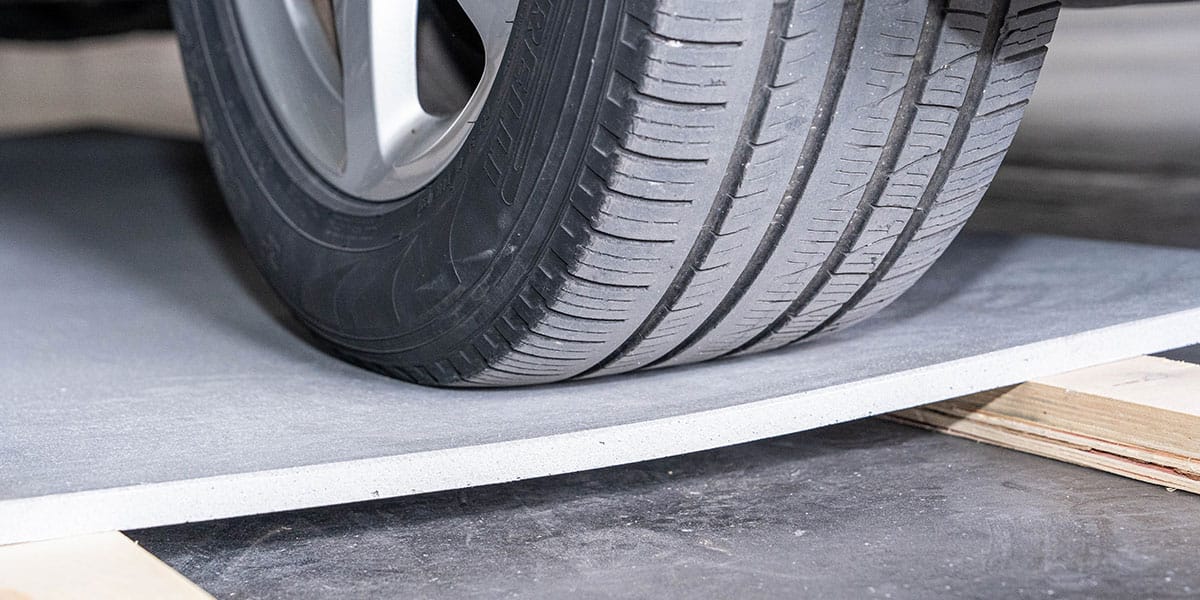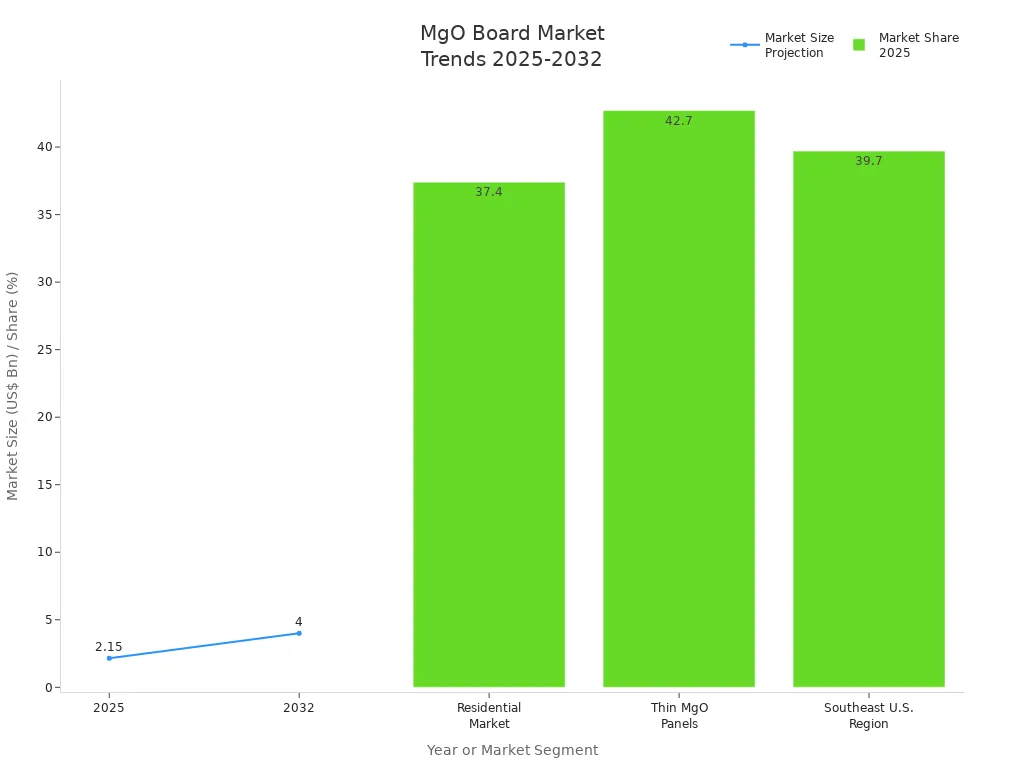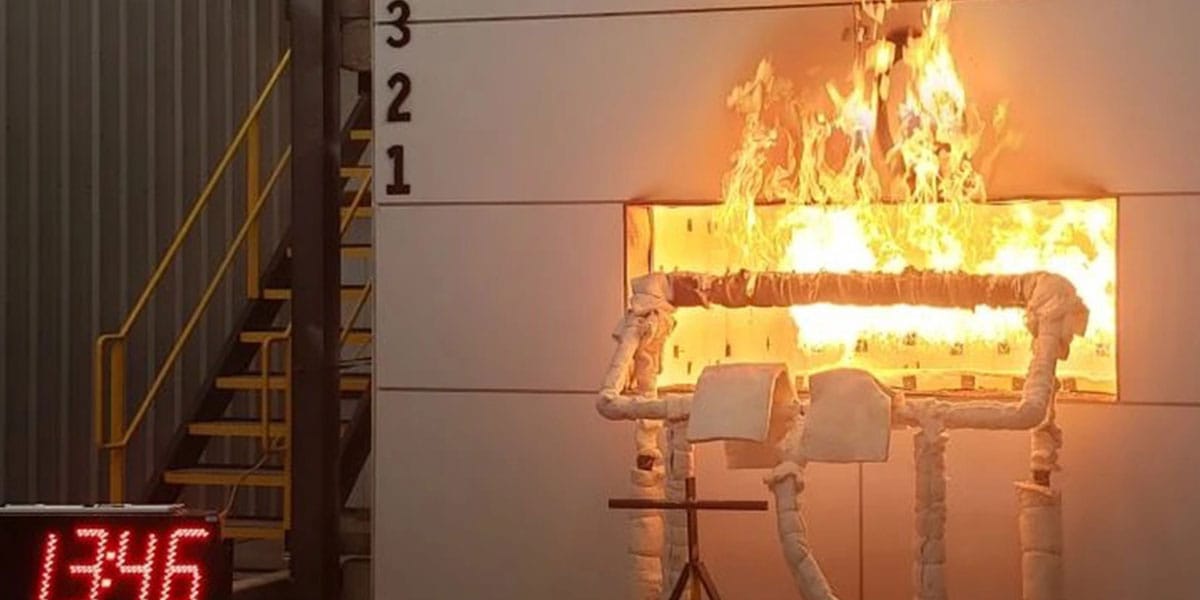
03 Aug Mgo Board Makes Floor Sheathing Safer and Stronger
Table of Contents
When you pick Mgo Board for floor sheathing, your project gets safer and stronger. This material is special because it resists fire, lasts a long time, keeps out water, and helps indoor air stay clean. You can feel calm because Mgo Board does not bend, get moldy, or attract pests. It is also simple to put in and saves money over time. Look at how it matches up with other materials:
Feature | Mgo Board | Plywood/OSB |
|---|---|---|
Fire Resistance | Less than 1 hour | |
Mold Resistance | High | Low |
Durability | Lasts longer | Prone to damage |
Health Safety | Non-toxic | May off-gas |
Key Takeaways
Mgo Board can stop fire for up to 4 hours. It does not burn or make dangerous smoke. This helps keep floors safe during emergencies.
This board does not let in water, mold, or bugs. It keeps floors strong and clean, even in wet places like bathrooms and basements.
Mgo Board is tough and can hold heavy things. It does not dent, crack, or bend easily. This makes floors last a long time.
You can put it in with simple tools. It does not need much care. This saves you time and money over the years.
Picking Mgo Board helps your home and the earth. It is safe, can be recycled, and keeps the air inside cleaner.
Mgo Board Overview
What Is Mgo Board
You might ask what makes Mgo Board special. Mgo Board is a sheathing made with minerals and fibers. People make it by mixing magnesium oxide, magnesium chloride, perlite, vermiculite, wood fibers, and fiberglass mesh. This mix gives the board its strong and unique features.
Magnesium Oxide (MgO): This mineral is the main part of the board. It helps the board stay strong and resist fire.
Magnesium Chloride (MgCl2): This ingredient holds the board together. It helps the board harden and keeps it strong.
Perlite and Vermiculite: These minerals make the board lighter. They also help the board keep heat inside.
Wood Fibers: These fibers make the board flexible. You can cut and shape the board easily.
Fiberglass Mesh: This mesh makes the board tougher. It helps stop the board from breaking.
Making Mgo Board is not hard, but it works well:
Pour the mix into molds to shape the boards.
Let the boards dry and get hard so they are strong and resist fire.
Check each board to make sure it is good quality.
Key Properties
Mgo Board is different because of its special physical and chemical features. You get a board that is strong, safe, and simple to use.
Mgo Board | Fiberboard | |
|---|---|---|
Composition | Mineral-based (MgO, MgCl2, perlite, wood fiber, vermiculite, glass mesh) | Wood fibers with resins |
Fire Resistance | Highly fire-resistant, noncombustible | Good fire resistance, less effective |
Moisture Resistance | Excellent; does not absorb moisture, no swelling or warping | Susceptible to moisture, may swell |
Durability | Resists mold, insects, damage; long lifespan | Prone to cracking, requires maintenance |
Weight | Lightweight, easy to handle | Can be heavier, varies |
Thermal Insulation | Excellent thermal insulation | Decent insulation, less effective |
Soundproofing | Some soundproofing capabilities | Excels in sound absorption |
Environmental Impact | Lower carbon footprint, fully recyclable | Higher footprint, limited recyclability |
Health Safety | Non-toxic, prevents mold growth | May emit formaldehyde, requires ventilation |
Tip: Use Mgo Board where you need fire safety, moisture resistance, and strength. It does not swell or change shape when wet. It keeps its form even in tough places.
Mgo Board is safe for people and the planet. It does not let out bad chemicals into the air. This makes it good for healthy indoor spaces. The board can handle high heat and lets out water when it gets very hot. This helps stop fires from spreading. You get a material that is stronger and more trustworthy than many old choices.
Safety Benefits
 Fire Resistance
Fire Resistance
You want your floor sheathing to protect your home from fire. Mgo Board gives you strong fire resistance. It does not burn or add fuel to a fire. This board stands up to high heat and keeps its shape even when other materials fail.
Mgo Board earns a Class A rating under ASTM E84, which means it has low flame spread and smoke development.
It passes strict tests like ASTM E84, EN 13501-1, and UL 723. These tests show that the board does not catch fire easily.
ASTM E119 testing proves that Mgo Board can keep its strength for up to 4 hours during a fire.
The board does not need extra chemicals to resist fire.
You can see how Mgo Board compares to plywood in fire tests:
Feature | MgO Boards | Plywood |
|---|---|---|
Combustibility | Non-combustible | Combustible |
Temperature Resistance | Withstands up to 800°F | Vulnerable to high temperatures |
Fire Resistance Rating | Up to 4 hours | Variable; needs fireproofing |
Fire Spread | Does not contribute to fire spread | Catches fire easily and spreads |
Mgo Board also outperforms OSB. OSB needs chemical treatments to slow fire, but it still cannot match the natural fire resistance of Mgo Board. OSB can lose its fire protection if it gets wet, and the chemicals may harm indoor air.
Tip: Choose Mgo Board for areas where fire safety matters most, like kitchens, basements, and multi-family buildings.
Mold & Pest Resistance
You want a floor that stays strong and clean, even in damp places. Mgo Board does not attract mold, mildew, or pests. Its mineral makeup keeps out termites and insects. You do not need to use chemical sprays or treatments.
Mgo Board stands up to high humidity, freezing, and temperature swings without warping or cracking.
It keeps its strength for decades and needs little care.
The board resists mold and mildew, which helps keep your indoor air healthy.
Unlike wood, Mgo Board does not rot or break down in wet places.
You can use it in bathrooms, basements, and coastal homes without worry.
Long-term studies show that Mgo Board keeps its shape and strength in wet and pest-prone areas. Its antimicrobial properties stop mold, mildew, and fungus from growing. The board’s inorganic makeup keeps termites and wood-boring insects away. You save money over time because you do not need repairs or extra treatments.
Health & Environment
You care about the air you breathe and the planet you live on. Mgo Board helps you create a safe and healthy home. It does not give off harmful gases or smoke, even in a fire. The board is made from natural minerals and does not contain toxins like formaldehyde or silica.
Mgo Board holds top safety ratings, such as A1 fire rating and Class A under ASTM E84.
It does not release toxic fumes or smoke during a fire.
The board passes strict indoor air quality tests, including FloorScore® and CARB Phase II.
Annual tests show “effectively zero” VOC emissions for over 14 years.
The board is 100% recyclable and biodegradable, which helps the environment.
Its production uses less energy and water than gypsum or concrete boards.
Mgo Board even helps trap CO₂ during curing, lowering greenhouse gases.
You do not need to use chemical biocides or antifungals with Mgo Board. This means you avoid indoor air pollution from these chemicals. The board’s long life means you replace it less often, so you have less dust and fewer chemicals in your home. Its thermal and sound properties also help keep your home comfortable and quiet.
Note: Mgo Board supports green building goals and helps you earn points for certifications like LEED.
Strength & Durability
Load-Bearing
You need a floor that can handle heavy loads without bending or breaking. Mgo Board stands out for its strong load-bearing ability. Engineers have tested panels made with Mgo Board and found that they hold up well under pressure. These tests show that an 11 mm thick board with glass-fiber mesh can support high compressive and tensile forces. The board stays stable until it cracks, which means you get steady support for your floors.
Mgo Board works well in composite panels, like those used in structural insulated panels (SIPs).
It resists buckling and cracking, even when you put a lot of weight on it.
The board’s lightweight design makes it easy to handle, but it still supports heavy furniture and foot traffic.
You can use it in places where you expect a lot of movement, such as hallways, kitchens, and commercial spaces.
Tip: Choose Mgo Board for floors that need to carry heavy loads, like in factories or busy homes. You get strength without extra weight.
Moisture Resistance
Floors often face spills, leaks, or high humidity. You want a material that does not swell, warp, or rot when it gets wet. Mgo Board gives you excellent moisture resistance. After 24 hours of water exposure, it keeps its shape and strength. Unlike plywood or OSB, it does not absorb water or grow mold.
Mgo Board blocks water and vapor, so it works well in bathrooms, basements, and kitchens.
It does not shrink or expand when the weather changes.
You do not have to worry about rot or fungus, even in damp places.
The board stays strong and flat, so your floors last longer.
Feature | Mgo Board | OSB | Plywood |
|---|---|---|---|
Moisture Resistance | Excellent | Poor | Moderate |
Dimensional Stability | High | Low | Moderate |
Mold/Fungus Resistance | Yes | No | No |
Note: For best results, always finish the board and use the right adhesives. This helps keep out water and protects your floor for years.
Impact & Longevity
Floors take a beating from shoes, furniture, and dropped objects. You want a surface that does not crack or dent easily. Mgo Board has a high impact resistance rating—about 5 kJ/m². This is much higher than cement boards, which means your floor can handle sudden hits and heavy use.
Mgo Board resists scratches, dents, and chips better than many other materials.
It keeps its strength and shape for many years, even in busy areas.
You spend less time and money on repairs because the board does not wear out quickly.
The board’s hardness and toughness make it a smart choice for schools, offices, and homes with kids or pets.
“Mgo Board gives you a floor that stays strong, safe, and good-looking, even after years of use.”
Mgo Board vs. Traditional Materials
 Plywood Comparison
Plywood Comparison
When you look at Mgo Board and plywood, you see big differences. Mgo Board is lighter, so it is easier to carry and put in place. You can cut Mgo Board by scoring and snapping it. Plywood usually needs power tools to cut. Mgo Board is much better at stopping fire. It does not burn, but plywood can catch fire and make a fire worse.
Mgo Board keeps out water better than plywood. Plywood can swell, bend, or get moldy if it gets wet.
Mgo Board does not need much care over time. Plywood often needs fixing, especially in damp places.
Mgo Board costs more at first, but you save money later. It lasts longer and you do not fix it as much.
Characteristic | Mgo Board | Plywood |
|---|---|---|
Upfront Cost | $0.50-$1.00/sq ft | |
Maintenance Needs | Minimal | Regular |
Moisture Resistance | Excellent | Poor |
Fire Resistance | Up to 4 hours | Up to 1 hour |
Dimensional Stability | High | Low |
Tip: Pick Mgo Board if you want a floor that stays strong and safe for a long time.
OSB Comparison
OSB is another material people use for sheathing. But it is not as safe or tough as Mgo Board. OSB does not have a fire rating unless you add more layers. If OSB gets wet, it can swell, rot, or get moldy. This can make the air inside your home bad. OSB also needs sprays to keep bugs away.
Mgo Board stops fire by itself and does not need extra help.
You can use Mgo Board in wet places, but OSB is not good for bathrooms or basements.
Mgo Board is lighter and easier to move than OSB.
OSB has glues that let out chemicals, but Mgo Board does not.
Feature / Aspect | Mgo Board | OSB |
|---|---|---|
Fire Resistance | Excellent | Poor |
Moisture Resistance | High | Low |
Durability | High | Low |
Health & Safety | Safer | Needs treatments |
Environmental Impact | Greener | Higher footprint |
Note: Mgo Board is better for the planet. It uses less energy to make and even takes in CO₂ while it dries.
Performance Summary
You want a floor that is safe, strong, and lasts a long time. Mgo Board gives you all these things. It stops fire, water, mold, and bugs better than plywood or OSB. You can use it in more places, even where it is wet or busy. Mgo Board costs more at first, but you save money on repairs. It is also better for the earth, with safer materials and less pollution.
Feature | Mgo Board | Plywood | OSB |
|---|---|---|---|
Fire Resistance | Up to 4 hours | Up to 1 hour | Poor |
Moisture Resistance | Excellent | Poor | Poor |
Durability | High | Moderate | Low |
Environmental Impact | Low | High | High |
Maintenance | Minimal | Regular | Regular |
If you pick Mgo Board, you get a floor that is safer, stronger, and lasts longer in your home or business.
Applications & Installation
Best Uses
You can use this board in many types of buildings. Builders choose it for both homes and commercial spaces because it stands up to water, heat, and heavy use. Here are some of the most common and effective applications:
Subflooring in kitchens, bathrooms, and basements where moisture is a problem.
Underlayment for tile, hardwood, or laminate floors because it creates a smooth, stable surface.
Structural floor sheathing in high-traffic areas, such as hallways and entryways.
Floors in schools, hospitals, and offices that need extra fire and impact resistance.
Projects that need better thermal insulation to help lower heating costs.
Buildings in humid or coastal regions, since the board resists mold, mildew, and termites.
Scientific studies show that some types of this board, like magnesium oxysulfate (MOS), work even better in damp places. MOS boards absorb less water and keep their strength longer, making them a smart choice for floors that face humidity or spills.
Tip: For the best results in wet or high-traffic areas, select a board type with proven moisture resistance and durability.
Installation Tips
You can install this board using simple tools and a few best practices. Follow these steps to make your floor last longer and stay safe:
Acclimate the boards for 48 hours before installation to prevent warping.
Use a circular saw with a carbide blade for clean cuts. For small cuts, score deeply with a utility knife and snap the board.
Always wear gloves, goggles, and a mask to protect yourself from dust and particles.
Support the board firmly while cutting to avoid chipping.
Drill pilot holes before fastening screws to reduce the risk of cracking.
Use rust-resistant screws and space them about 12 inches apart on edges and 16 inches in the center.
Leave a 1/8-inch gap between boards and at the walls for expansion.
Apply construction adhesive at corners to prevent micro-cracks.
Reapply sealant every 2–3 years in wet or busy areas to keep moisture out.
Avoid dragging heavy furniture across the floor to prevent damage.
Keep your workspace clean and use a HEPA vacuum or wet suppression to control dust.
If you use galvanized steel framing, place a barrier between the board and the metal to stop chemical reactions.
Always follow local building codes and manufacturer guidelines.
Note: Regularly check for cracks or loose screws and fix them right away. This keeps your floor strong and safe for years.
You want a floor that stays strong and safe for years. Builders choose this board because it resists fire, water, and mold better than plywood or OSB. You get peace of mind with top safety ratings, strong warranties, and proven durability in wet and busy spaces. Many professionals trust it for its long-term value and fewer repairs. Market trends show more homes and public buildings now use this board for safer, greener floors.
Top reasons to choose:
Holds up under heavy loads and impacts
Keeps shape in wet or humid places
Backed by lifetime warranties for thick panels

Choose smart. Pick a floor that protects your family and saves money over time.
FAQ
What tools do you need to cut Mgo Board?
You can cut Mgo Board with a circular saw and a carbide blade. For small cuts, score the board with a utility knife and snap it. Always wear safety gear to protect yourself from dust.
Can you install Mgo Board over old flooring?
Yes, you can install Mgo Board over old floors if the surface is flat and stable. Clean the area first. Use construction adhesive and screws for a secure fit. Check for loose boards before starting.
Is Mgo Board safe for people with allergies?
Mgo Board does not release harmful chemicals or dust. It resists mold and mildew, which helps keep indoor air clean. You can use it in homes where people have allergies or asthma.
How long does Mgo Board last in wet areas?
Mgo Board resists water and does not swell or rot. You can use it in bathrooms, basements, and kitchens. With proper care, the board can last for decades, even in damp places.

 Fire Resistance
Fire Resistance Plywood Comparison
Plywood Comparison